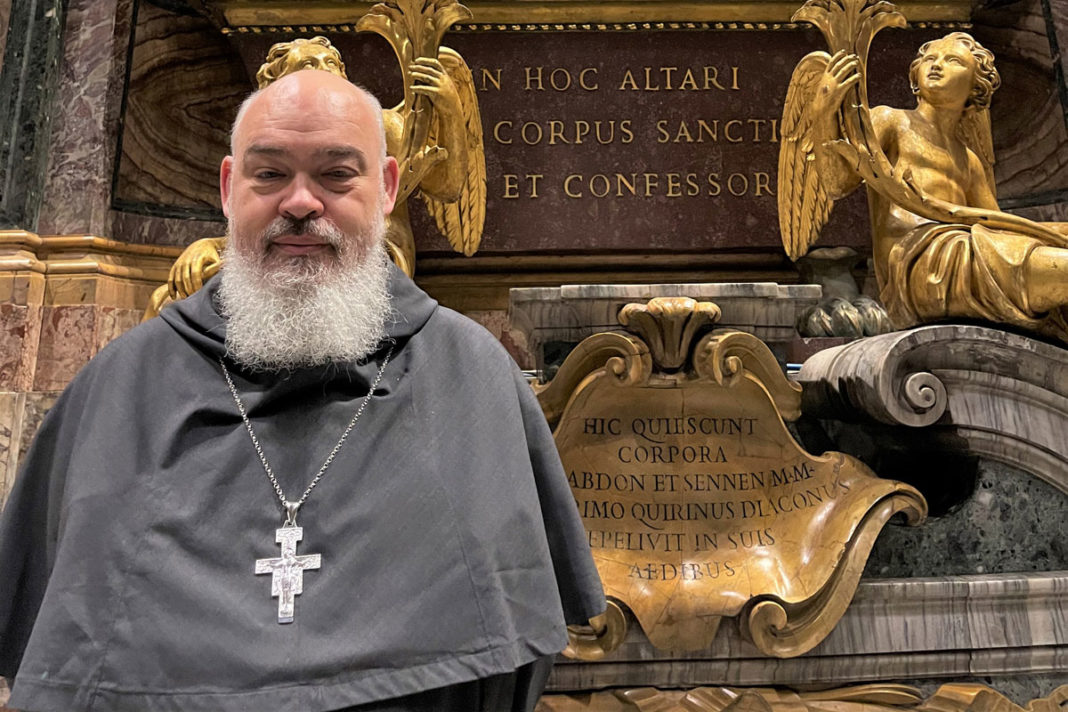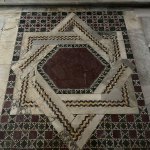It is a well-known fact that Rome is a treasure trove of Christian faith, art and history. Those who are lucky enough to live there, and who are a little curious, are amply rewarded with fresh discoveries.
Rome’s catacombs, the remains of the first martyrs, the relics of the Lord, the houses of the saints who lived in Rome … there is an embarrassment of options that one can choose to study. St. Francis of Assisi himself described a precise path in the city with several stops that the friars have written about and lovingly cared for over the centuries.
Friar Dominique J. MATHIEU, who was appointed to preside over the Church of Teheran-Ispahan, Iran, learned about the existence of some ancient Christian martyrs from Persia who are enshrined here in Rome. He asked the local Pastor, Friar Agnello STOIA, to be his guide. A short walk from the Basilica of the Twelve Holy Apostles, one finds the Basilica of San Marco Evangelista in Piazza Venezia. The pastor there is Father Renzo GIULIANO. On January 31, 2021, he welcomed the visiting friars and showed them some of the traces and relics of the Evangelist. According to tradition, St. Mark had a house here in Rome and wrote his Gospel for the local community. Under the main altar of the basilica, are found the relics of the holy martyrs Abdon and Sennen. The ancient story about them says that in the third century, they were brought by the Emperor Decius, as captives, from Persia to Rome, where they were martyred. The deacon, Quirinius, kept their remains in his home and later laid them to rest in the Basilica of San Marco Evangelista. Alongside the main altar, a passage goes down to the crypt, where a small altar marks the place of the martyrs’ tomb. Friar Dominique was also accompanied by Friar André, a clerical brother. After some meditation and prayer, the friars went back up to the liturgical hall for the celebration of Sunday Mass. At the end of the celebration, Friar Dominique’s admiring gaze was drawn to a beautiful Persian star displayed near the front of the Cosmatesque-style altar, the splendid work of medieval artists.
On Rome’s Tiber Island, however, there are the relics of a much more famous Persian saint. This is St. Mario, a name which is very common among Italians, even though no one knows that it is a Persian name. On Tiber Island is the Church of San Giovanni Calibita, which is attached to the Island’s Fatebenefratelli Hospital. Under the main altar of the church repose the relics of Saints Mario, his wife Marta and their sons Audiface and Abaco. The story about this family of martyrs is very sketchy. Still, it recounts that they came to Rome in the third century to venerate the tombs of the martyrs and were themselves martyred because they were caught, along with a priest, burying the bodies of two hundred and sixty martyrs along the Via Salaria. On February 27, 2021, Friar Maurizio DI PAOLO took a turn as a guide for the pilgrims. They visited a member of the Fatebenefratelli community, Father Felix ACUÑA ZAMORA, who welcomed them and showed them the Church of San Giovanni Calibita, a small jewel in the Roman Baroque style. After some prayer before the martyrs, the friars were taken through the sacristy to a terrace that looks over a beautiful view of the Tiber. The friars concluded their visit with some prayer before the image of the Virgin of the Lantern. It is said the Tiber once flooded and submerged this fresco, which used to be located outside the church. Miraculously, the lamp that burned in front of the Madonna never went out. Thus, the friars entrusted Friar Dominique, and his mission in Persia, to the Mother of God, so that even in the midst of difficulties and dangers, the light of the star, the symbol of Mary, may always shine as a sign of trust and hope.
Friar Agnello STOIA


























![Interview Regarding Pope Sixtus V [Felice Peretti] (1585-1590) Fra Domenico (Mimmo) CASTIGLIONE](https://www.ofmconv.net/wp-content/uploads/2024/04/d-06-02-24-02-150x150.jpg)



